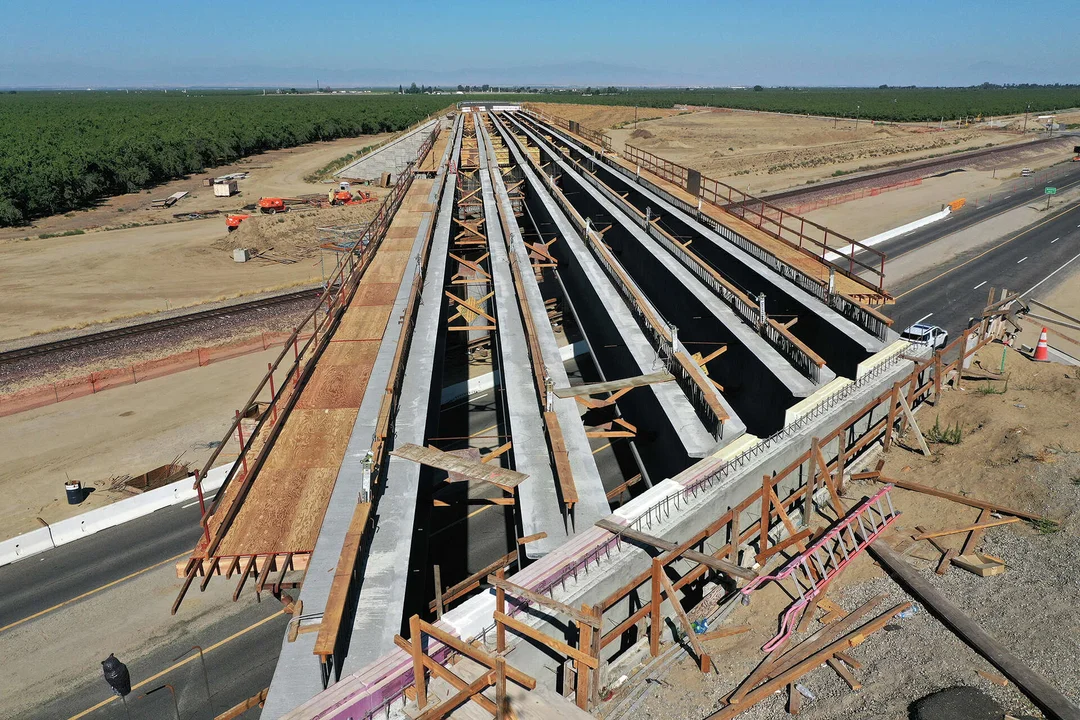
Is California’s Bullet Train on the Fast Track to Success?
In the heart of California's Central Valley, a massive infrastructure project is making headlines for its latest advancements, even as it grapples with political and financial hurdles. The California High-Speed Rail initiative, once a visionary dream to connect Los Angeles and San Francisco at record speeds, is now pushing forward with key milestones that could redefine U.S. transportation. But with mounting scrutiny from federal leaders, the question remains: Will this ambitious endeavor finally gain momentum, or face more delays?
Recent updates highlight significant progress in the project's construction phase. The California High-Speed Rail Authority has completed the Whitley Avenue underpass in Kings County, a critical component of the Merced-to-Bakersfield segment. This two-lane structure, built over two years in collaboration with the Dragados-Flatiron Joint Venture, is part of a broader plan to create 222 grade separations along the 119-mile route. According to Garth Fernandez, the authority's Central Valley regional director, this achievement demonstrates the team's ability to overcome challenges like environmental obstacles and supply chain issues. "We continue to make progress and remain committed to completing several more structures across the Central Valley this year, including some of our largest viaducts," Fernandez stated in a recent announcement.

Adding to the excitement, CEO Ian Choudri has revealed an accelerated timeline for track-laying. Speaking at a Fresnoland panel, Choudri announced that rail materials will be purchased this year, with the first tracks laid in 2025. This marks a shift from earlier plans that targeted 2026 or 2027, achieved through cost-saving measures like direct purchasing from manufacturers. For instance, Choudri negotiated with steel producers to reduce costs by 15-20% by bypassing general contractors. This approach not only trims expenses but also speeds up the schedule, focusing initially on the Tulare-Kern line to Shafter area, which is the most advanced section.
However, these gains come amid ongoing uncertainties. The project, approved by voters in 2008 with a $9.9 billion bond, has faced rising costs and opposition. President Donald Trump has labeled it a "waste," and there's risk to the $4.3 billion in unspent federal funds. Choudri remains optimistic, emphasizing, "I don’t see any point where we have to say, 'Oh, we can't do it.'" Analysts note that this reevaluation could set a precedent for public infrastructure projects, balancing innovation with fiscal responsibility. By comparing the current strategy to past delays—such as lawsuits and shifting timelines—it's clear that direct procurement and focused construction in areas like Fresno could lead to more efficient outcomes, potentially inspiring similar initiatives nationwide.

More than 60 miles of guideway are already complete, with over 50 of the 93 necessary structures finished. As construction continues in counties like Madera, Fresno, and Kern, the authority plans to start on Central Valley stations in 2025 and select a train manufacturer soon. This progress underscores the project's potential to revolutionize travel, reducing congestion and emissions through 100% electrified rail.
In summary, California's High-Speed Rail project is at a pivotal juncture, blending impressive engineering feats with real-world challenges. What does this mean for the future of sustainable transportation in the U.S.? Could these milestones pave the way for a new era of high-speed connectivity? We invite you to share your thoughts in the comments below—do you believe this train will reach its destination, or is it derailed before it starts?